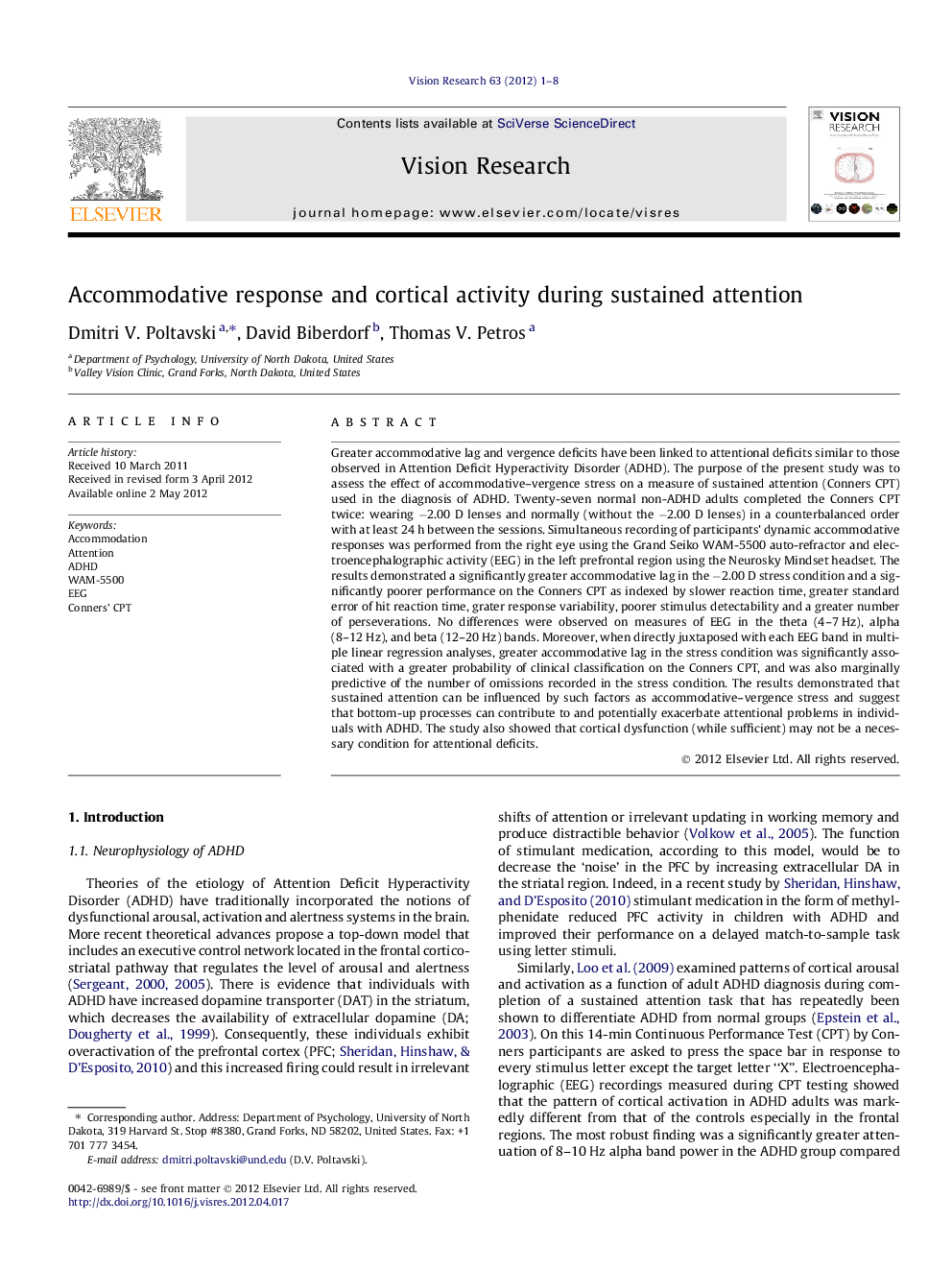| Article ID | Journal | Published Year | Pages | File Type |
|---|---|---|---|---|
| 4033989 | Vision Research | 2012 | 8 Pages |
Greater accommodative lag and vergence deficits have been linked to attentional deficits similar to those observed in Attention Deficit Hyperactivity Disorder (ADHD). The purpose of the present study was to assess the effect of accommodative–vergence stress on a measure of sustained attention (Conners CPT) used in the diagnosis of ADHD. Twenty-seven normal non-ADHD adults completed the Conners CPT twice: wearing −2.00 D lenses and normally (without the −2.00 D lenses) in a counterbalanced order with at least 24 h between the sessions. Simultaneous recording of participants’ dynamic accommodative responses was performed from the right eye using the Grand Seiko WAM-5500 auto-refractor and electroencephalographic activity (EEG) in the left prefrontal region using the Neurosky Mindset headset. The results demonstrated a significantly greater accommodative lag in the −2.00 D stress condition and a significantly poorer performance on the Conners CPT as indexed by slower reaction time, greater standard error of hit reaction time, grater response variability, poorer stimulus detectability and a greater number of perseverations. No differences were observed on measures of EEG in the theta (4–7 Hz), alpha (8–12 Hz), and beta (12–20 Hz) bands. Moreover, when directly juxtaposed with each EEG band in multiple linear regression analyses, greater accommodative lag in the stress condition was significantly associated with a greater probability of clinical classification on the Conners CPT, and was also marginally predictive of the number of omissions recorded in the stress condition. The results demonstrated that sustained attention can be influenced by such factors as accommodative–vergence stress and suggest that bottom-up processes can contribute to and potentially exacerbate attentional problems in individuals with ADHD. The study also showed that cortical dysfunction (while sufficient) may not be a necessary condition for attentional deficits.
► We tested sustained attention (CPT) in normal adults with and without −2.00 D lenses. ► Significantly greater dynamic accommodative lag observed with −2.00 D lenses. ► No change in electroencephalographic (EEG) activity was observed between conditions. ► Accommodative lag but not EEG activity was associated with CPT performance. ► Accommodative/vergence stress alone is sufficient to produce attentional deficits.
